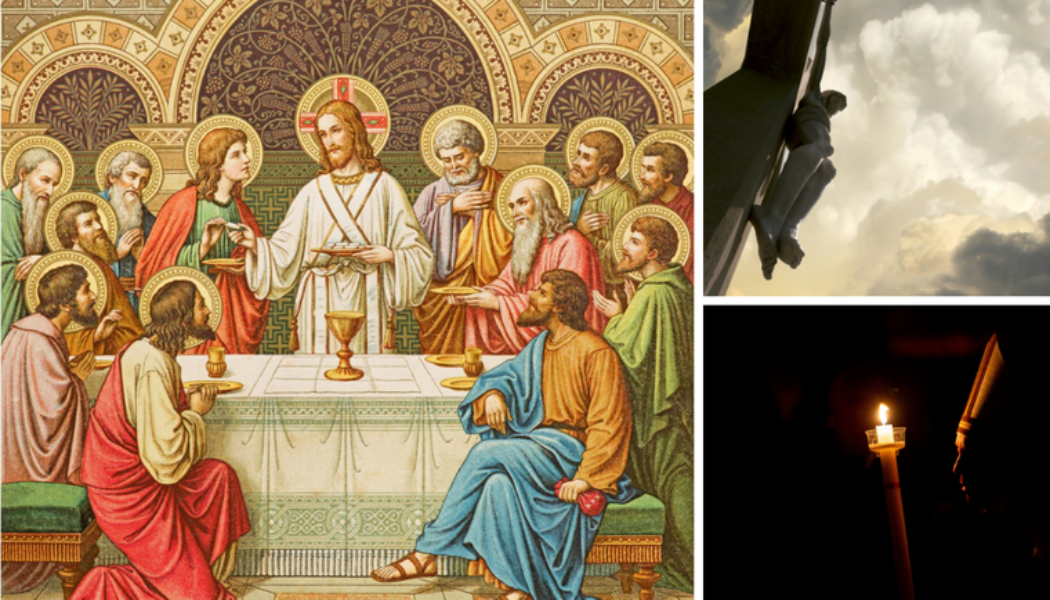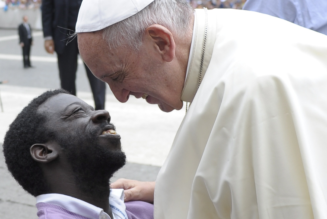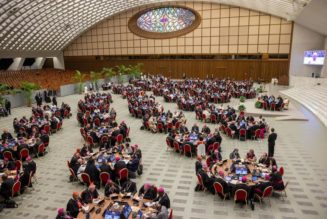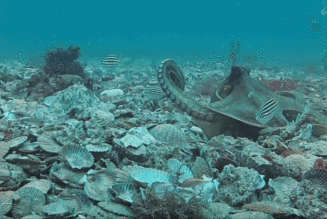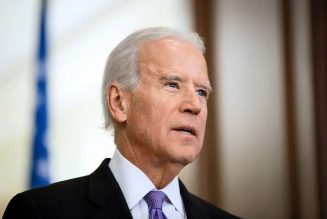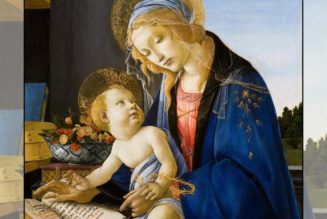
For understandable reasons, many look at the celebration of Corpus Christi as the apex of the Eucharistic Revival.
The Solemnity of the Lord’s Body and Blood has served, since 1264, as the annual feast to “dare to do all we can,” as St. Thomas Aquinas urged in his liturgical sequence for the day, to thank the Lord Jesus for the res mirabilis, the wondrous gift of himself in the Blessed Sacrament. Therefore, it’s fitting that the three-year-plus Eucharistic Revival began on Corpus Christi last June 19 and will shift from the diocesan to the parish phases on Corpus Christi this year, June 11.
But the real liturgical summit of the Eucharistic Revival, like all aspects of our faith, must be the Sacred Triduum, when we celebrate what gave us the gift of the Eucharist we celebrate on Corpus Christi. This year, therefore, we ought to live Holy Thursday, Good Friday and the Easter vigil with a particularly Eucharistic focus.
The reality is that, often, we don’t focus enough on the Eucharistic dimension of the Triduum during the Triduum. One of the reasons why there was a need for the institution of Corpus Christi in the first place, according to the Lord’s 12th-century revelations to St. Juliana of Liège that helped prepare for the solemnity, was because a focused celebration of the Lord’s Eucharistic presence was absent from the Church’s calendar.
On Holy Thursday, the Church normally focuses on three things: the institution of the Holy Eucharist, yes, but also the institution of the priesthood, through whom Christ makes himself present, and his call for priests to imitate Jesus in washing the feet of the world.
Despite the Eucharistic procession within our churches at the end of the Mass of the Lord’s Supper and a period of extended adoration of the Lord in a much-decorated altar of repose, the focus of the faithful is often on accompanying Jesus in his abandonment, blood-and-sweat-filled prayers, sufferings and arrest in the Garden of Gethsemane.
Similarly, on Good Friday, when Jesus gave his body and poured out his blood for us on Calvary, our concentration is normally on his enormous sufferings and death and in begging forgiveness for our sins that caused his crucifixion. The reception of Jesus in Holy Communion at the end of the Commemoration of the Lord’s Passion is often experienced as relatively anti-climactic, compared to the reading or singing of the Passion according to St. John, the veneration of the cross, and even the prayers of the Stations of the Cross, the preaching of “The Seven Last Words” and the beginning of the Novena to Divine Mercy.
During the Easter vigil, much of our attention goes to its unique elements — the lucernarium with its fire, blessing of the Paschal candle, procession and singing of the Exultet; the 17-course meal of Sacred Scripture and prayers that comprise the Liturgy of the Word; and then the baptismal liturgy with the candles, litany, the blessing of the Easter water, the baptism and confirmation of our new brothers and sisters, the renewal of our baptismal promises — rather than the Liturgy of the Eucharist, during which we have the awesome privilege to receive Jesus’ Risen Body and Blood and thereby experience a participation in eternal life even now.
And so it would be helpful during this time of Eucharistic Revival to shine a spotlight on the Eucharistic dimension of all we live during the Triduum. Here would be some of my recommendations.
On Holy Thursday, I’d urge in the Liturgy of the Word an explicit link to the Eucharistic dimension of the Last Supper.
In the first reading, we focus on the Jewish Passover, which was God’s preparation, 13 centuries before, for what Jesus would fulfill in the Upper Room. It’s a great time to focus on Jesus as the Lamb of God and how, like the Jews, we’re called to consume the Lamb. It’s also an opportunity to ponder Jesus’ Precious Blood, which isn’t wiped on lintels, but poured within us. It’s likewise a chance to focus on the dimension of the Eucharist as a “memorial feast” and “perpetual institution,” making live in time what Jesus himself did on that most sacred night.
The Psalm focuses us on taking up the cup of salvation to thank the Lord for all the good he has done for us, which is precisely what we do in the Mass.
The New Testament reading has us ponder St. Paul’s words about what Jesus did on Holy Thursday to give us his Body and the new covenant in his Blood, reminding us that as often as we celebrate Mass, we “proclaim the death of the Lord until he comes,” because in the Eucharist, with the separate consecration of Jesus’ Body and Blood, we proclaim his saving death and the Resurrection to which it led.
The Gospel of the washing of the apostles’ feet is an indication, as Pope Benedict used to emphasize, of the need for the sacrament of penance before the sacrament of the Eucharist. Jesus told Peter that we don’t need to be “bathed” anew because we’ve been bathed in baptism, but we do need to have our feet washed because feet are a sign of our contact with the filth of the world. Jesus wants to cleanse our feet through the same apostles, bishops and priests through whom he later gives us his Body and Blood.
Holy Communion, the Eucharistic procession and adoration at the altar of repose should be marked by particular gratitude during the Eucharistic Revival, similar to what we show on Corpus Christi, since it’s not just we who receive, follow and accompany the Eucharistic Jesus, but he who gives himself, leads, accompanies, saves and sanctifies us!
On Good Friday, we should look toward the reception of Jesus as the culmination of our participation in Jesus’ passion, his self-sacrifice on the cross.
As we venerate the cross, we prepare to receive the fruit of that new Tree of Life.
Each of the Stations of the Cross can be interpreted within a Eucharistic key, as each of those stages were traversed in order for Jesus’ body not merely to be placed in the tomb but within us.
The Seven Last Words of Jesus can all be actualized: In the Eucharist, Jesus continues to pray to the Father for mercy, opens paradise, points us to his Mother, who wants to school us in Eucharistic love, often experiences abandonment from his people, thirsts for our thirst, culminates his saving plan, and seeks to have us join, as his Body and Bride, his commendation to the Father.
In the beginning of the novena of Divine Mercy and recitation of the chaplet, we offer to the Eternal Father, in expiation of our sins and those of the world, the Eucharist, Christ’s own Body, Blood, Soul and Divinity.
At the Easter vigil, we remember that the Eucharistic Christ is the true fire, the One who seeks to illumine and warm us from within.
The various stages of salvation history rehearsed during the magnificent Liturgy of the Word are all meant to culminate in our communion with the Word made flesh: Christ has left the tomb ultimately not just to ascend to the Father but sacramentally to enter us!
The Baptismal Rite and the Renewal of Promises helps to remind us of how our new birth leads to the way he nourishes us.
And the Liturgy of the Eucharist is meant to recapitulate among us the Mass the Risen Jesus himself did in Cleopas’ house the night of the Resurrection — and inspire us, like the disciples in Emmaus, to share the incredible news that Jesus has indeed risen — and not just appeared to us but abides in us.
As we prepare for the Sacred Triduum and to enter into the Paschal Mystery of Christ’s passion, death and resurrection, which the Catechism says “stands at the center of the Good News” the Church proclaims to the world. There’s no better way to do that than by focusing, and entering into communion with, Jesus in the Eucharist, the source and summit, root and center of Christian faith and life.
